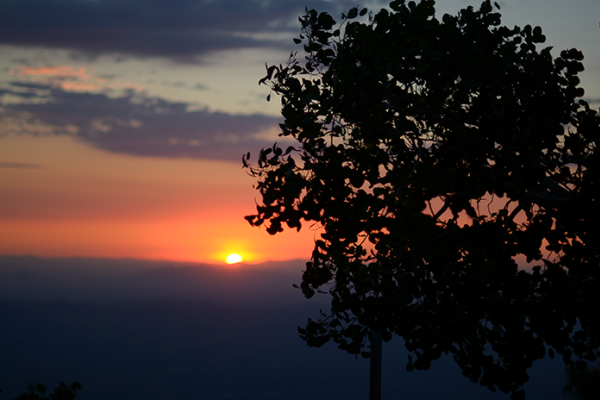Ohio SkyLites - February 2024

Constellations, Planets, and Astronomical Events Visible in February 2024
While winter brings cold winds and slippery sidewalks, it also brings long nights to go out and observe! However, the long nights are growing shorter with each passing day. The sun rises around 7:25 am, and sets around 6:05 pm every evening, providing 10 hours and 40 minutes of sunlight, though it varies slightly every day. On average, approximately 2 minutes and 27 seconds of daylight is added every day this month.
February’s full moon occurs the night of February 24th. This full moon has two names given by Native American Tribes. The first, and most common name is the Snow moon, named for the heavy snowfall experienced during this time of year. However, the winter months also made hunting difficult, which is how it also got the nickname the Hunger moon from some tribes. February’s new moon occurs earlier in the month on February 9th. In the lucky event that the sky is clear this winter, the best time to observe is always during a new moon, since the moon’s bright shine can make fainter objects impossible to view.
February is not a great month to observe planets this year. Mercury, Venus, Mars, and Saturn are all too close to the sun to observe this month. Mercury and Mars will show themselves again in our sky next month, but Saturn won’t be visible until early May. Saturn has begun its long journey behind the sun; however it will be visible in the day during the solar eclipse on April 8th if you are able to find yourself within the path of totality with clear skies.
Jupiter is the crown jewel of the sky this month. It is nearly overheard after the sun sets, and it will set near midnight this month. Uranus is closely behind Jupiter, setting at 1am, but the ice giants Uranus and Neptune are not visible without the aid of powerful binoculars or a telescope.
Auriga is a lesser known constellation that is directly overhead between sundown and midnight. Auriga is Latin for Charioteer, and it is located on top of Taurus. In fact, the two constellations share the star Elnath, which is known as both Beta Tauri and Gamma Aurigae. While looking for Taurus is the easiest way to find Auriga, it can also be identified by the bright star Capella that is located to the west of the constellation Gemini.
Northwest of Auriga is the constellation Perseus, named for the mythological Greek hero. Perseus is most well known to be the home of the Alpha Persei Star Cluster. This cluster is found through the star Mirfak, the brightest star in Perseus; however, the star cluster contains many stars within the constellation. Another bright star cluster is visible this month: the Pleiades! This famous cluster is located in the constellation Taurus. Also called “the Seven Sisters” the Pleiades cluster contains hundreds of stars, but there are seven bright blue stars that are easily visible with the naked eye. This cluster is a beautiful sight for any astronomer on a clear winter night.
Happy Observing!
Sources:
Image Credits:
Jupiter: https://www.space.com/jupiter-opposition-closest-approach-skywatching Credit: NASA, ESA, A. Simon (Goddard Space Flight Center), and M.H. Wong (University of California, Berkeley)
Winter Constellations: https://stellarium-web.org/
Pleiades: https://www.space.com/pleiades.html Credit: Manfred_Konrad
